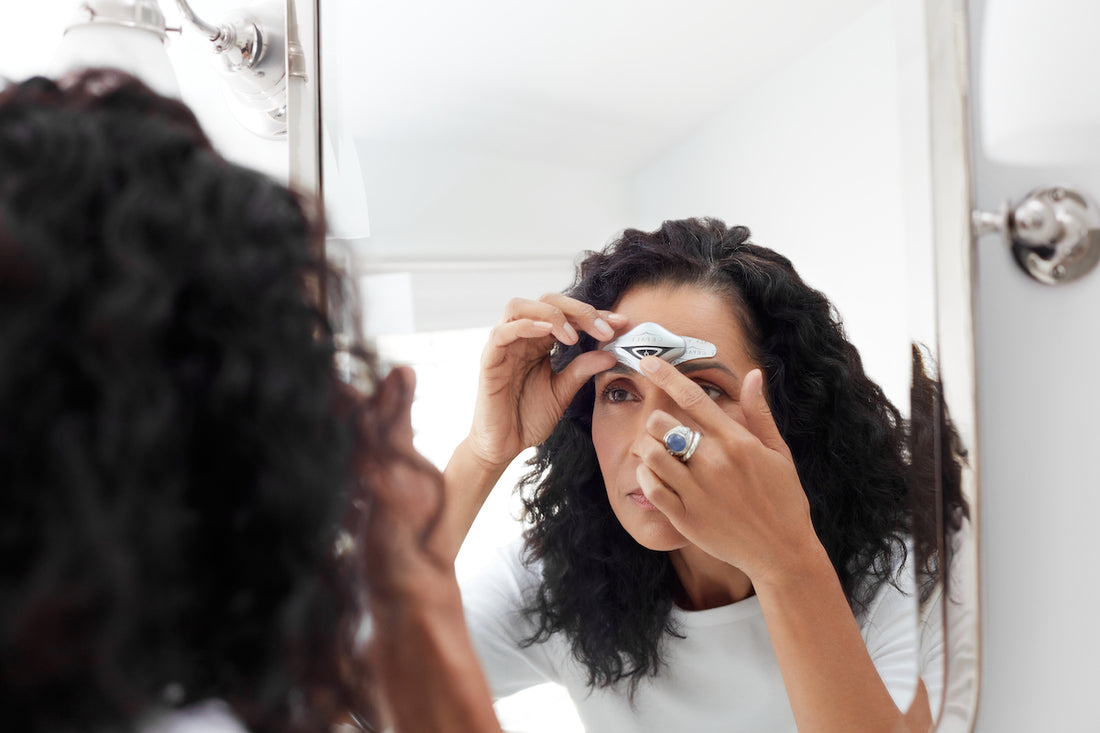Your CEFALY DUAL just arrived in the mail. You’ve taken it out of the box and charged it. Now, you’re ready to try using it for the first time. You’re excited. You’re curious. You’re a little anxious!
Don’t worry. We’re here to walk you through using CEFALY to treat migraine for the first time. And we encourage you to join our CEFALY community on Instagram and Facebook, where users offer their own experiences and advice.
First, read your CEFALY DUAL user guide.
Please don’t flip through the user manual and toss it in the recycling! CEFALY DUAL is a medical device, and for that reason it’s essential to read and keep the user guide. It includes things you really need to know, such as:
- Contraindications (situations in which you should not use CEFALY)
- Possible side effects of using CEFALY
- How to use CEFALY safely and effectively
- Troubleshooting tips
Treat electrodes with care.
The guide tells you to wash your forehead with soap and water before applying the electrode. This is really important, because oils from the skin will prevent the electrode from adhering and shorten the life of the electrode.
Make sure you always wash your forehead and your hands. Then apply the electrode exactly as shown in the diagram, so its base is centered between your eyebrows and the wings of the electrode are above your eyebrows. Many first-time users place it too high on the forehead, or even upside-down.
Watch our video on placing the electrode correctly and starting your CEFALY treatment.
Don’t be afraid of the sensation.
First-time users often hesitate, wondering, “What does CEFALY feel like?” The sensation of using CEFALY might be unfamiliar, but it should never be painful. The gentle stimulation feels different for different people. Some describe it as ticklish or tingly. Others, usually after using it for a while, say it’s relaxing, like a massage, or puts them to sleep.
If using CEFALY hurts for any reason, then stop your session. A stinging sensation may mean that the electrode is not adhering correctly, or that you have a cut or lesion on the skin of your forehead. CEFALY must be used only on clean, unbroken skin. If the electrode irritates your skin, then try the hypoallergenic blue gel electrodes.
Know that you can control the intensity.
Because CEFALY works by stimulating and desensitizing the trigeminal nerve, it’s important to give yourself time to adjust to the stimulation and develop your tolerance. Don’t try a full-intensity session the first time you use the device! Instead, after starting the program, wait until you feel the intensity is at your maximum comfort level and then press your device button once to stabilize it. The intensity will remain at that level for the rest of the session. (You can do this at any point during the first 14 minutes of the program).
Over the first few weeks of using CEFALY DUAL, you can gradually increase the intensity. Don’t get discouraged if it takes a while to build up your tolerance. Some users say it took months for them to be able to use their CEFALY DUAL at its maximum intensity.
Watch our video on what CEFALY feels like and how to adjust the intensity
Set aside time every day to use CEFALY.
CEFALY’s PREVENT program is clinically proven to help reduce migraine severity and frequency with compliant daily use.[i] Those two words, compliant and daily, are important. To get the best results from your CEFALY, use the PREVENT program exactly as instructed, every day. Longtime users recommend choosing a time and place to use CEFALY — such as in bed, watching TV at 9 p.m. — to establish a regular habit.
How long does it take for CEFALY to work? That varies by user. Some see results in a few weeks. On average, users see improvement within two months. If you feel like CEFALY is not working for you, contact our expert customer support team. We can help make sure you’re using it the right way and answer any questions you may have.
New to CEFALY? Start here.
[i] Jean Schoenen, Bart Vandersmissen, Sandrine Jeangette, Luc Herroelen, Michel Vandenheede, Pascale Gerard, Delphine Magis. PREMICE STUDY Migraine prevention with a supraorbital transcutaneous stimulator. A randomized controlled trial. Neurology Feb 2013, 80 (8) 697-704; DOI: 10.1212/WNL.0b013e3182825055

